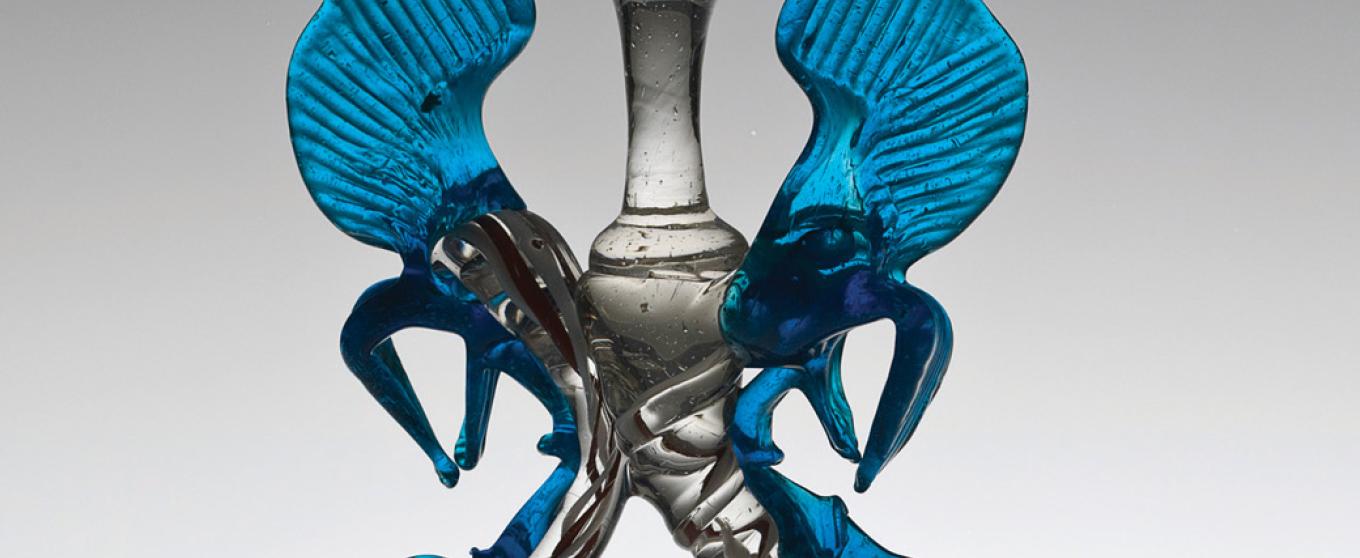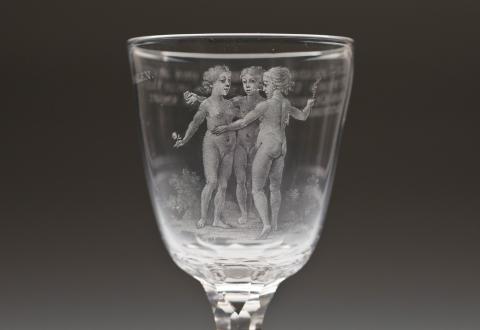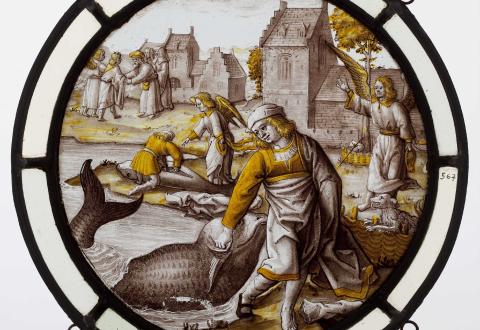
Glassware & stained glass
In the right-hand wing of the Cloister, connecting with the Gothic gallery and opening onto an inner courtyard, an exceptional collection of historic glassware is on display. The collection spans from Antiquity to the late nineteenth century and focuses largely on pieces produced in what is now Belgium.
Roman and Venetian glass
A number of brightly coloured bottles illustrate some of the earliest sophisticated glassware from the Mediterranean region. Roman glass, in particular, showcases the creativity of form and use of colour. The first century saw a great flourishing in glassmaking, spurred by the invention of the blowpipe. During the Renaissance, numerous glassworks were established across Europe. Venetian glass, prized for its luxury and beauty, was widely imitated in Northern Europe. Each piece of decorative glass was carefully engraved, often depicting a prince, exotic flowers and animals, or scenes from daily...
A number of brightly coloured bottles illustrate some of the earliest sophisticated glassware from the Mediterranean region. Roman glass, in particular, showcases the creativity of form and use of colour. The first century saw a great flourishing in glassmaking, spurred by the invention of the blowpipe. During the Renaissance, numerous glassworks were established across Europe. Venetian glass, prized for its luxury and beauty, was widely imitated in Northern Europe. Each piece of decorative glass was carefully engraved, often depicting a prince, exotic flowers and animals, or scenes from daily life. Visitors are captivated by this miniature art, which developed during the 17th and 18th centuries, particularly in the Netherlands, Bohemia, Silesia, and Germany.
As the second main transit port to the Northern countries in the 16th century, Antwerp attracted merchants and foreign craftsmen. The first Italian glassmakers settled there around 1535 to produce glass in the Venetian style. Antwerp glassmaking, whose influence waned during the early decades of the 17th century, was eventually overtaken by that of Brussels.

The Bonhomme Family of Liège
In the 17th century, the Liège-based Bonhomme family gradually came to own all the glassworks in the region. They dominated both glassmaking and trade in the Prince-Bishopric of Liège and the Southern Netherlands. To supply their full range of products, they employed Italian masters capable of blowing tableware and decorative glass in the Venetian style, and German craftsmen for bottles and roemers. The Italian glassmakers working for Bonhomme came from Venice, but especially from Altare near Genoa. Their production was of exceptional quality and renowned far beyond the region’s borders.

Medallions
Glassmaking in the Low Countries and the principality of Liège developed considerably during the Renaissance. Artistic production included small panels of colourless glass decorated with paint. Usually circular, these pieces are called ‘medallions’ or ‘roundels’. Though little known today, they were very popular across Europe from the 15th century onward. Their small size made them ideal for insertion into windows or stained-glass installations. The Museum houses a remarkable group of medallions and small panels from the 16th and 17th centuries. These form part of a broader collection that...
Glassmaking in the Low Countries and the principality of Liège developed considerably during the Renaissance. Artistic production included small panels of colourless glass decorated with paint. Usually circular, these pieces are called ‘medallions’ or ‘roundels’. Though little known today, they were very popular across Europe from the 15th century onward. Their small size made them ideal for insertion into windows or stained-glass installations. The Museum houses a remarkable group of medallions and small panels from the 16th and 17th centuries. These form part of a broader collection that also includes monumental stained-glass windows, single panels, and fragments.

Contact
- Valérie Montens: v.montens@kmkg-mrah.be